“We’re growing up!” boasted Ann Smith, executive director of Featherstone Center for the Arts. “We’re turning twenty-one! We’re an adult!”
She had reason to be proud. In mid-August Featherstone celebrated a debutante ball of sorts, with the grand opening of its new gallery space. The event was titled The Big Show because, unlike the old Virginia Weston Besse Gallery, the new Francine Kelly Gallery could (and did) accommodate large works: sculpture, hangings, multi-panel works, series works. But the space itself was the real star that night – brightly lit, wide expanses of wall, clerestory windows, and transoms over multiply glazed barn doors. And that’s just the gallery. Classrooms, an office, a conference room, and a library are attached, and a teaching kitchen for future culinary arts classes is in the works – all part of a large structure christened the Art Barn. A brand new pottery studio sits on the other side of a small expanse of lawn.
It’s a long way from the Meetinghouse for the Arts, as Featherstone was first called. According to Bruce MacNelly, one of the early architects and supporters of the organization, in 1980 a group of Islanders wanted to provide a multi-generational performing arts space and formed the nonprofit umbrella organization behind the Wintertide Café at Five Corners in Vineyard Haven (currently the site of Tropical Restaurant). In the 1990s they combined forces with like-minded visual artists and began to explore options for a permanent, rather than rented, home. The answer came in 1996 through Mary Stevens and Virginia Besse, two of Meetinghouse’s board members. Stevens and her husband were considering selling a twenty-four-acre horse farm they owned near the head of the Lagoon, and Stevens, being an artist, preferred to see the farm and its six buildings become an arts center rather than a real estate development. Besse and her husband Arthur donated most of the funds needed to purchase the property, which, along with other donations, provided the $300,000 needed to purchase six and a half acres with the six farm buildings. (The rest was purchased by the Martha’s Vineyard Land Bank.) Because the farm was called Featherstone, the new home was named Featherstone Center for the Arts.
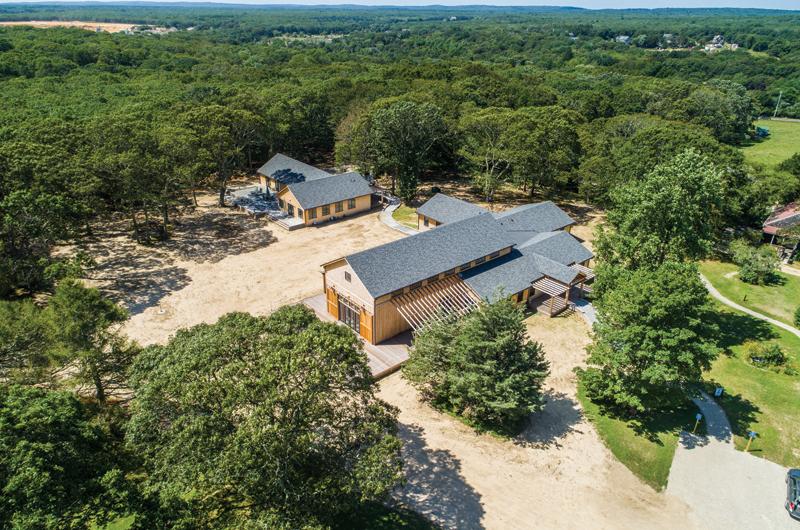
The transformation of the farm buildings into art centers was not an easy task. The first exhibits were held in the horse stalls, with the aromas of acrylics, pastels, and oils competing with the extant horsey smells. Three barns became studios, providing space for a limited number of classes in photography, monoprinting, weaving, pottery, woodworking, and stained glass. The farmhouse became the gallery, library, and computer lab, while The Pebble, a small structure that was originally a beauty shop, became a studio for artists in residence. Under the leadership of Peggy Pinney, who served as the first executive director and president of the board, Featherstone gradually became more slanted toward visual arts than performing arts, although a stage was built to accommodate musical presentations. In 2003 Francine Kelly became the first paid executive director. Her daughter, Ann Smith, took over in 2010.
“Just as I was taking over as executive director, we were looking at our fifteenth anniversary and creating a strategic plan and saying, ‘What do we want Featherstone to look like in 2016?’ – which would be our twentieth anniversary,” Smith recalled. Her first official act was a request for proposals from several architectural firms to come and look at Featherstone’s physical grounds, talk to its constituents, and determine what the campus could become. The job landed with Mashek MacLean Architects of Vineyard Haven, which interviewed students, teachers, artists, and board members. “What we learned,” said Smith, “is people really wanted a better environment in which to create their art. They loved the experience they had here, but we had done all we could do in terms of renovating the existing barns because each one of them was meant for horses.”
As an example Smith cited the life-drawing workshop where several artists crammed around a nude model. “They wanted more space, to be away from the model to incorporate light and shadow,” she said. “My colleague remembers one day when we had twenty-seven people jam-packed shoulder-to-shoulder into one of our former classrooms,” echoed Elizabeth Shule, who is one of the facilitators of the Tom Maley life drawing group. The classroom hosted an average of eight to ten classes per week during fall, winter, and spring, and shared space with a summer art camp for children in the summer.
With a master plan from Mashek MacLean in hand they began to raise funds to finance the dream. It’s common practice in the fundraising world to begin with a “quiet phase,” the conventional wisdom being that if you can’t convince your faithful donors of the merits of the project, you’re certainly not going to convince the general public. “You don’t go public until you raise at least half of the funds,” said Smith. “For us it was a $6 million campaign” – $4 million was earmarked for building; the other $2 million for an endowment to cover the cost of maintenance.
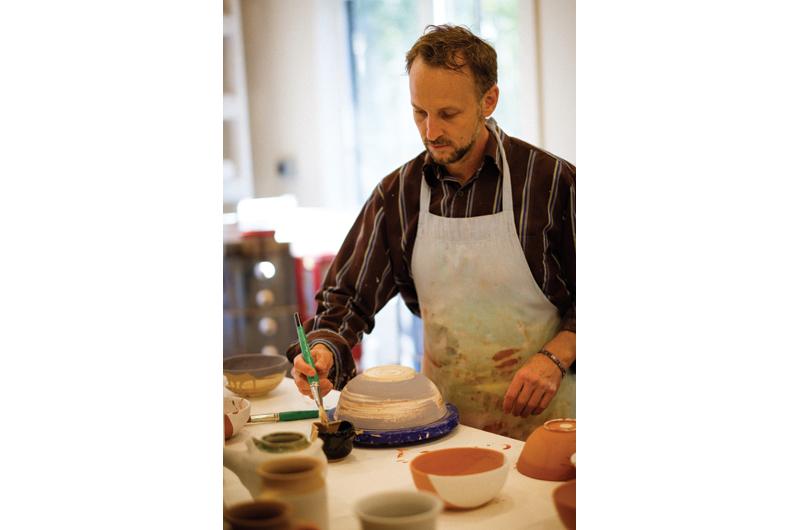
The initial plan was to build only the new pottery studio first. “Growing the endowment, the new Art Barn, and renovations to existing buildings were to be later phases,” explained Posie Haeger, Featherstone’s director of development. But after receiving a significant gift in 2016, the board decided to move ahead at full speed. “There was a notable cost savings in constructing both buildings at the same time,” said Haeger, “as well as limiting the amount of wear and tear on the campus.” Likewise, the decision to go with modular construction was driven both by cost considerations and by the speed with which it could be completed.
“Fast,” said Smith. “For us that was big. We did not wish to close down. Because we’re here year-round, the community depends on us.”
And Featherstone depends on the community, she might have added. “We can’t have down time because that’s our operating budget,” said Judy Cunniffe the president of Featherstone’s board. “Fortunately, we were able to keep most of our classes afloat in spite of the construction.”
They found a partner in Bill Potter and his company, Squash Meadow Construction. Ten years ago Squash Meadow had been “stick-building” (from scratch and on-site) custom homes and dabbling in modular. “Up to that point,” Potter explained, “modular homes were all cookie cutter or double wide.” When he decided to expand his forays into modular building, therefore, he searched for a company that could, as he put it, “customize modular homes for Martha’s Vineyard and not suburbia USA.”
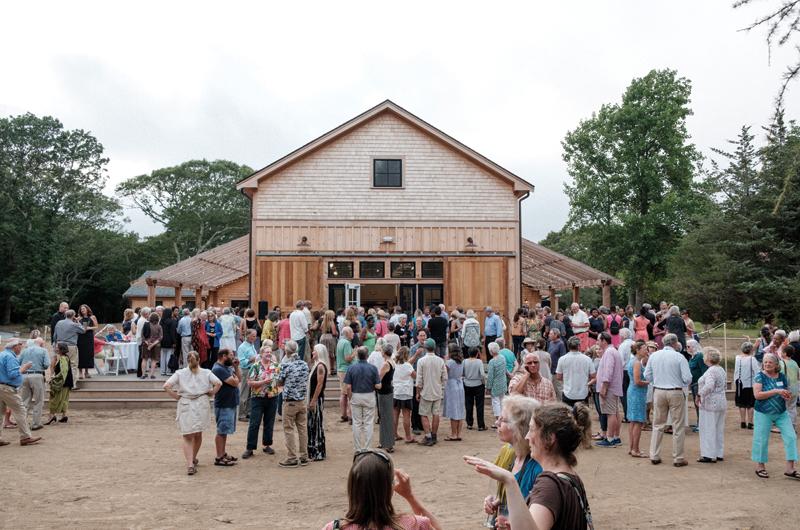
He found it at Westchester Modular Homes, and after a long, mutually beneficial collaboration, he speaks glowingly of his partners there. “Their team is gigantic,” he said. “The factory employs 130 people. The engineers at Westchester are brilliant in the ways they can calculate loads and spans. We use steel, engineered lumber, and high-performance materials to eliminate the limits of what’s being built in factories.”
Nevertheless, the Art Barn was ambitious. “The model we put together at the factory really pushed the envelope in design,” said Potter.
While the design of the structure was in progress, Leslie Baker and Julia Mitchell, co-chairs of the gallery committee, worked on the interior design of the gallery space – flooring, lighting system, hanging system, walls, and storage. In order to finance the interior design, they held an art-sale fundraiser where people could buy original art for a minimum donation. They raised $37,000 in two days. “It was very well supported by the art community on the Island,” said Baker. She paused to chuckle. “And by people who know a good deal when they see it.
“The important thing about having an Art Barn is to have really good lighting,” she continued. “Now the artists who donated work to the fundraiser can look up and realize they were a part of that.”
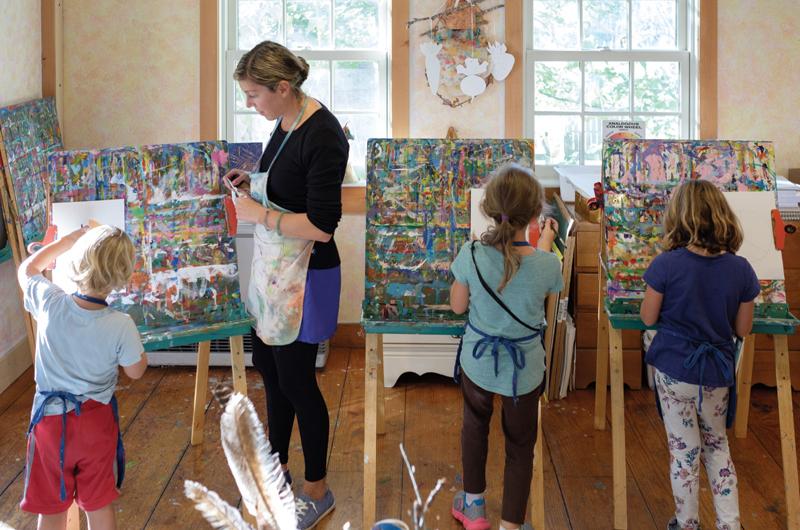
Once the designs were done the amount of construction that took place on the Island was surprisingly small, limited almost entirely to site preparation and landscaping. The pottery studio, for instance, was barged to the Tisbury Wharf Company in Vineyard Haven in four modules. With each one already wired, plumbed, and ready to be put together on the site, assembly took one day. The Art Barn, being far larger and more complicated, took a little longer, but it too was completed by the original deadline despite several months of delays. And though parking became extremely limited throughout the construction, classes, summer camp, gallery shows, poetry readings, workshops, the Flea and Fine Arts Market, and musical events were held on-site without interruption.
“When I saw it I couldn’t believe it. I was blown away,” said Anne Grandin, artist, advisor, teacher, former board member, and major donor. “The size and scope, and to do it in one year – it’s amazing.”
As grand and glorious as it is, in at least one way, the new “grown-up” Featherstone Center for the Arts brings the organization full circle to its coffeehouse roots. The gallery space and a deck on the far side of the barn doors can be used as indoor and outdoor performance spaces, a wish-come-true for the original Meetinghouse supporters.

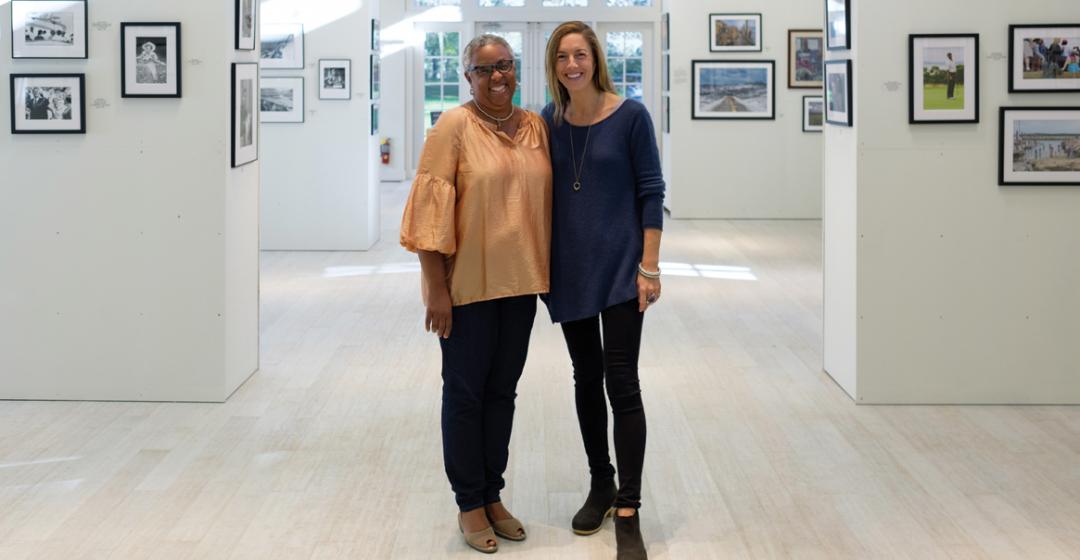


 1 comment
1 comment
Comments (1)